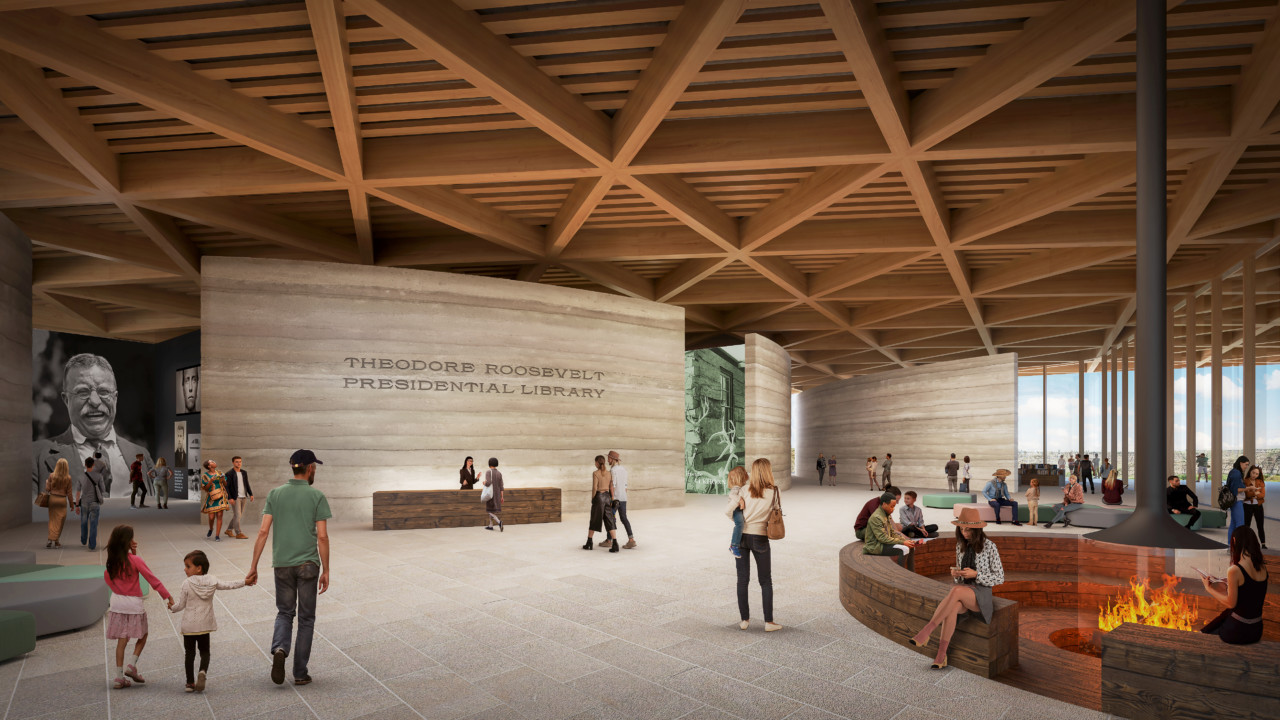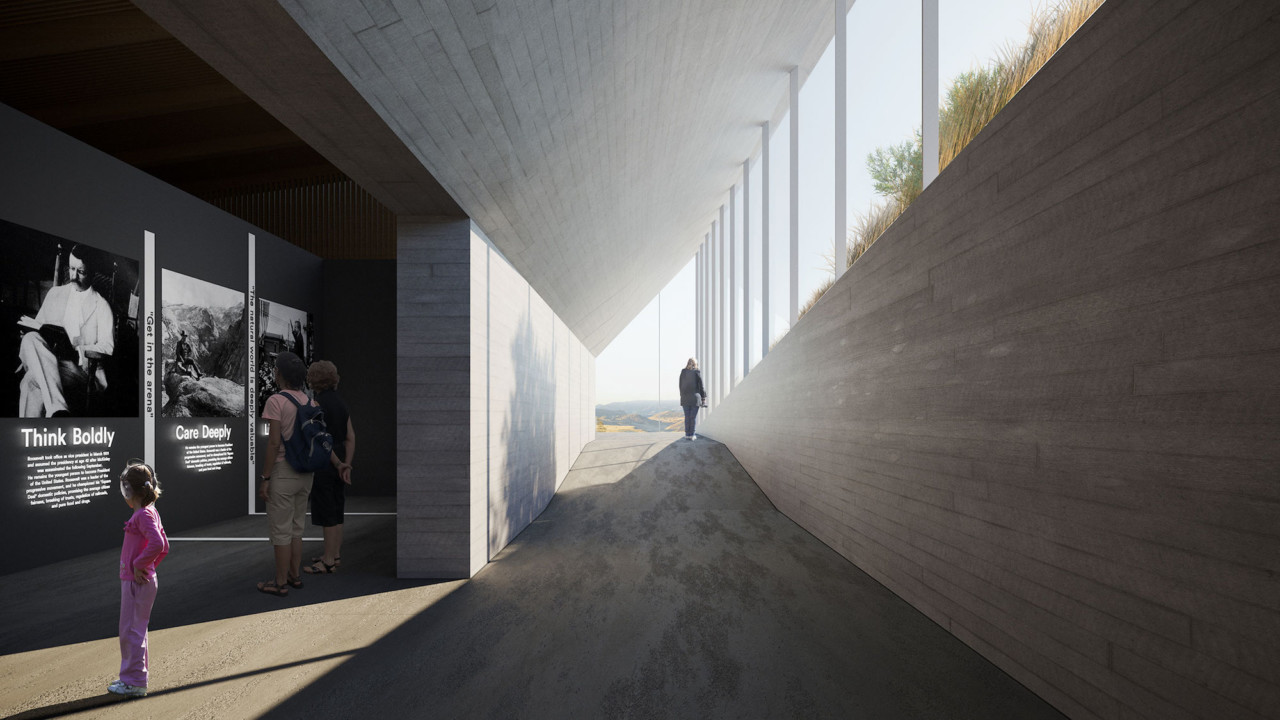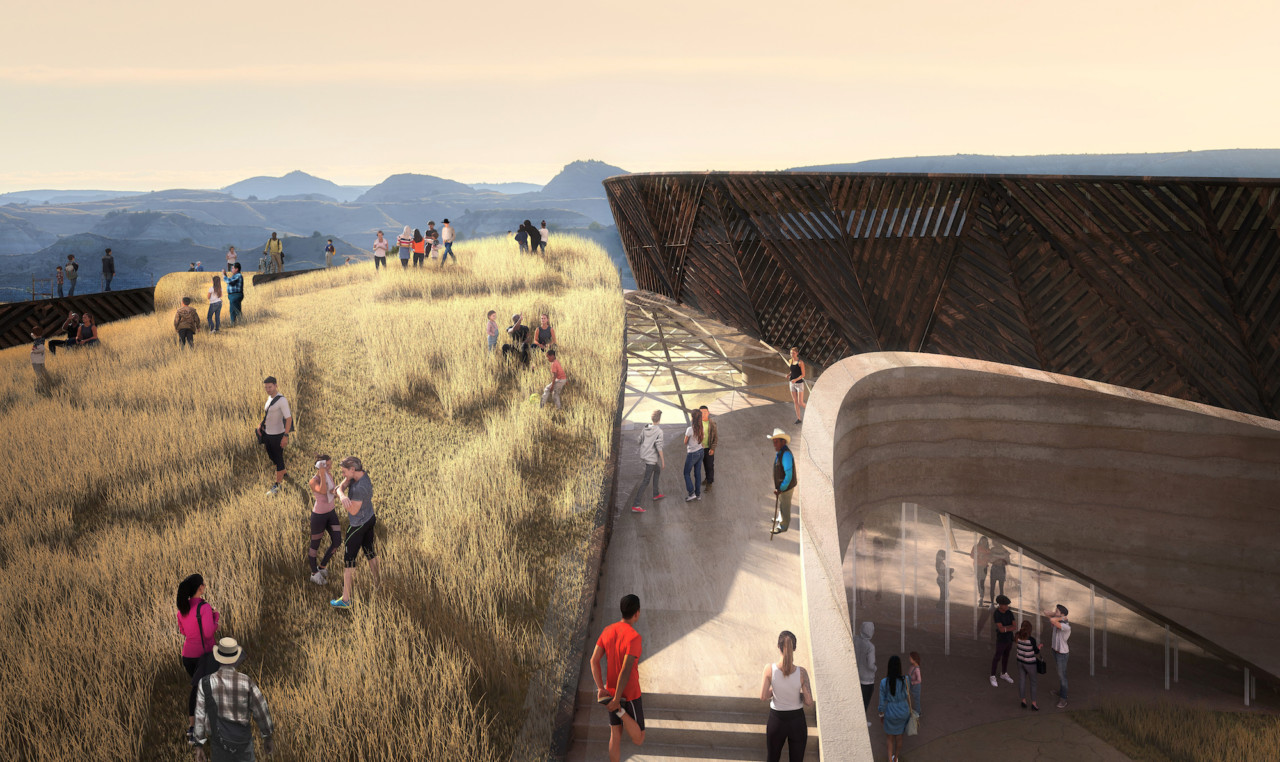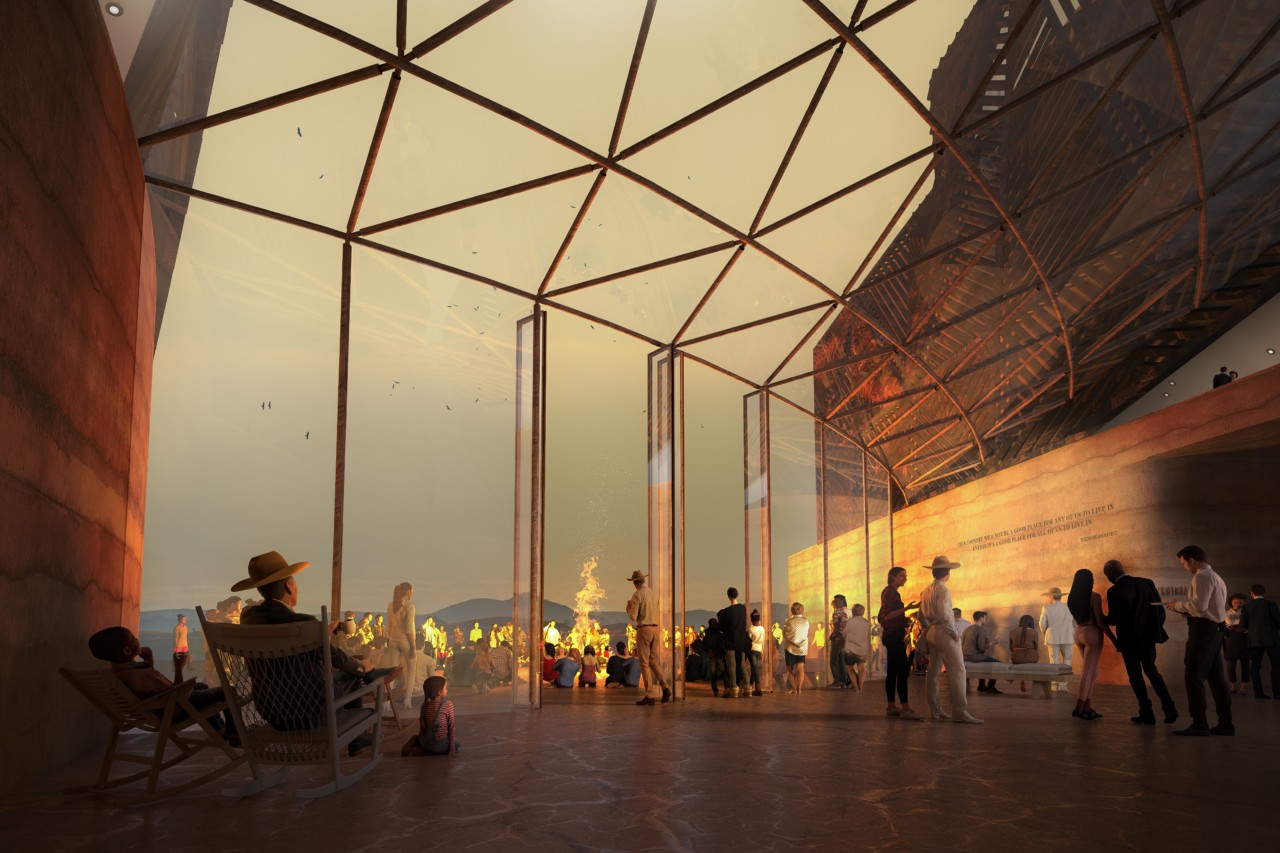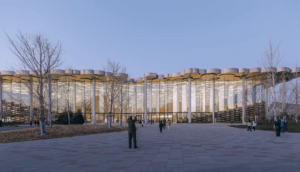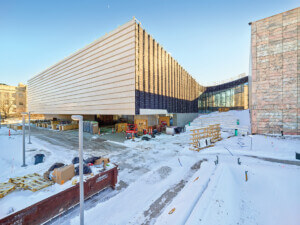First announced in May, the three finalists in a competition to design the Theodore Roosevelt Presidential Library, to be located in the Badlands of North Dakota, have now unveiled images and details of their visions. While each of the proposed designs—from Snøhetta, Studio Gang with OLIN, and Henning Larsen with Nelson Byrd Woltz—are singularly executed, they are all inspired by and integrated into the rugged natural landscape—one that the New York-born 26th president, an honorary North Dakotan and part-time cowboy, had a major impact on in terms of conversation—that the future library will call home.
The six-year-old nonprofit Theodore Roosevelt Presidential Library Foundation (TRPLF) selected the three finalists following, in the words of the foundation, an “extensive search and interview process” that involved a dozen short-listed leading international architecture studios, all of which had “affirmatively responded” to a Request for Qualifications made public by the TRPLF in April. To get better acquainted with the terrain and local culture, team members from the firms traveled to Medora (population: 128) in June, a Wild West-themed former boomtown-turned-recreational gateway and tourist magnet that the library will be located on the outskirts of.
The future library site, sprawling across 50 acres, is about a mile-and-a-half outside of Medora on land currently owned by the U.S. Forest Service that’s in the process of being acquired by the TRPLF. (Medora’s top attraction aside from Theodore Roosevelt National Park, Medora the Musical—the self-described “rootin’-tootinest, boot-scootinest show in all the Midwest”—is a close neighbor.) The foundation is also in the midst of raising $100 million in private donations by the beginning of next year—if the funds are secured, the project will receive a $50 million operational endowment from the state.
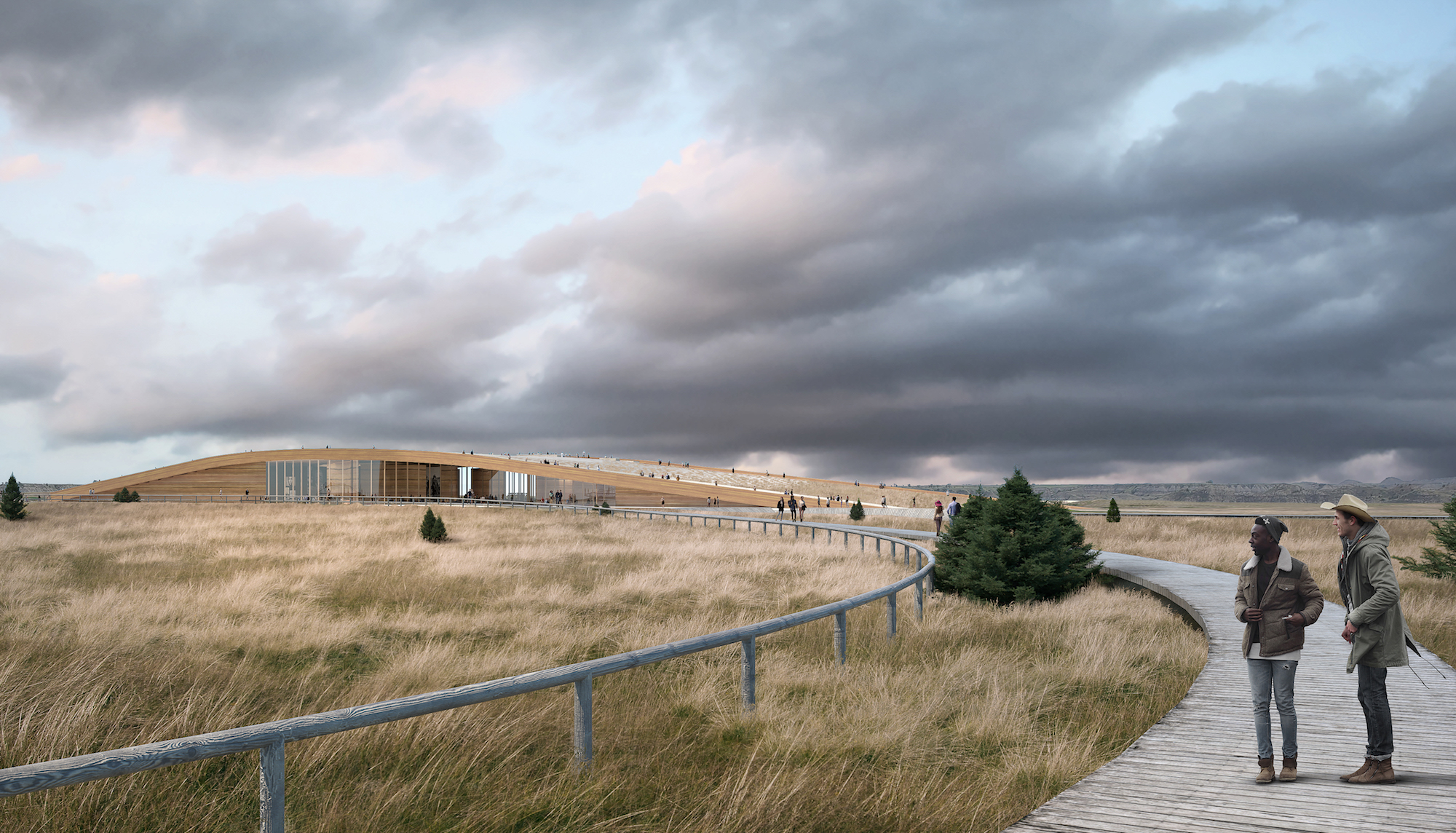
In conceiving the design (both architecture and landscape architecture) of the library campus, the Oslo-headquartered Snøhetta was informed “by the president’s personal reflections on the landscape, his commitment to environmental stewardship, and the periods of quiet introspection and civic engagement that marked his life.”
In a press statement, the firm describes the design—its most noticeable feature being the vegetated, visitor-accessible roof-cum-viewing deck covering the main library complex that steadily emerges from the northeastern edge of a grass-covered butte—as being “more than a building.” Composed of “buildings, pavilions, paths, and landscape,” Snøhetta has envisioned a “journey through a preserved landscape of diverse habitats, punctuated with small pavilions providing spaces for reflection and activity.” In total, five different pavilions, inspired by the primitive shelters found in national parks, are tucked alongside the so-called Library Loop, an elevated boardwalk that encircles the main library building and branches off into a network of smaller rugged paths and the famed 144-mile-long Maah Daah Hey Trail. (It would seem that decent walking shoes and a sense of Teddy Roosevelt-ian sense of adventure are a must to fully experience the sprawling proposed design that’s integrated into the natural environment and then some.)
As for the main library and its auxiliary structures, all will be built with locally sourced and renewable materials and be designed for all-season accessibility, providing shelter from the summer heat and bitter winter cold of the Badlands.
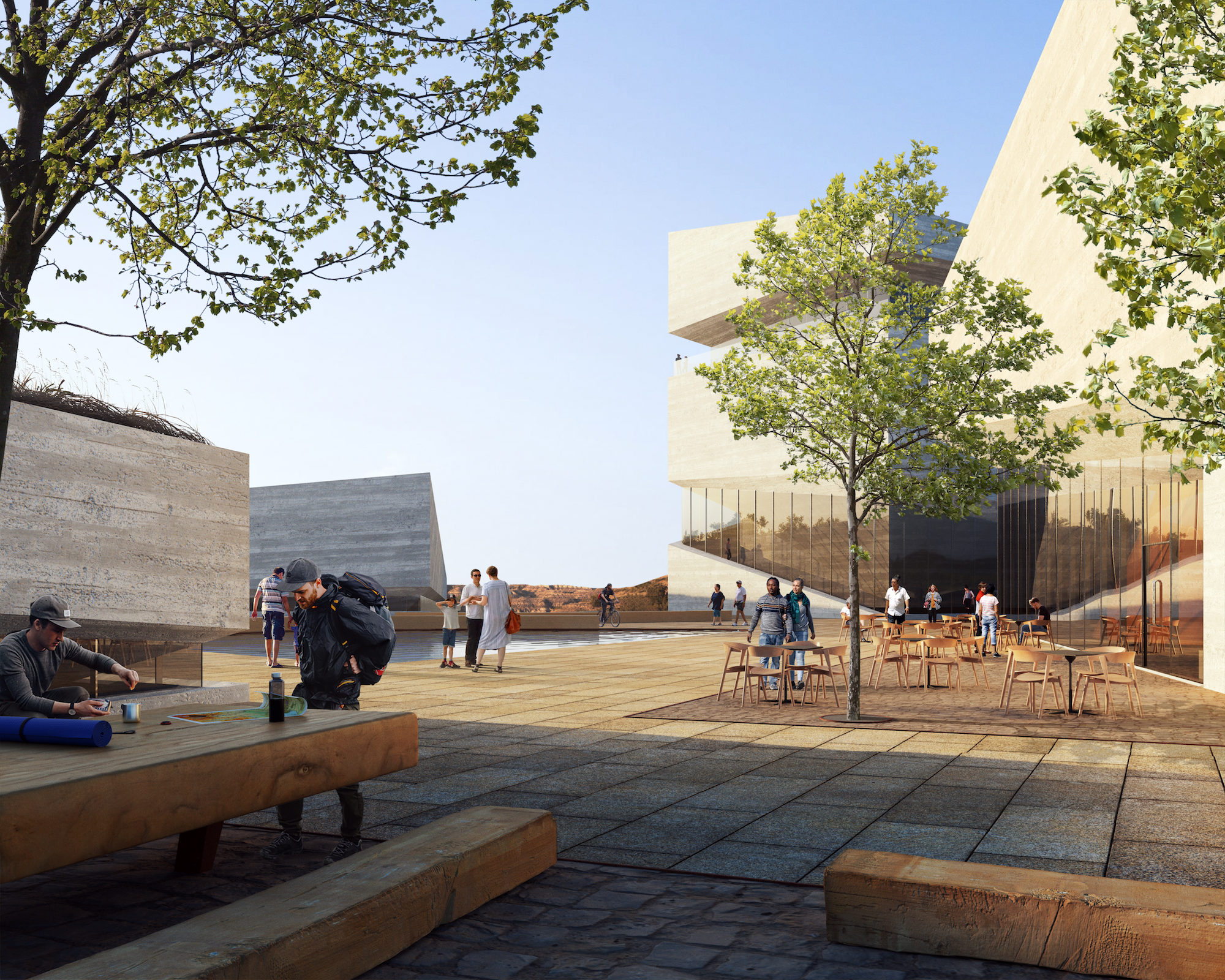
Henning Larsen, like Snøhetta, a Nordic-founded firm with international reach, has designed a presidential library that doubles as a vehicle in which to fully take in the wondrous landscape so closely associated with Roosevelt. In collaboration with Charlottesville, Virginia-based landscape architecture firm Nelson Byrd Woltz, Henning Larsen’s library showcases the dramatic natural surroundings via four interconnected volumes—each a “formal reference to the geography of the Badlands,” per the firm—that frame the sweeping views and are oriented around a central plaza. One structure, a proper observation tower dubbed the Legacy Beacon, serves as a highly visible landmark and turns the library into “a hub for community and fluid threshold over which visitors can cross into the sprawling majesty of the Theodore Roosevelt National Park.”
The buildings would be linked by a continuous interior circuit, the Hero’s Journey, that’s not “just an exhibition of his [Roosevelt’s] life, work, and legacy, but is also a showcase for the landscape,” explained the firm. “Each phase of the exhibition is punctuated by a space that overlooks a different aspect of the surroundings, showing off the changing nature of the Badlands from every vista and vantage.”
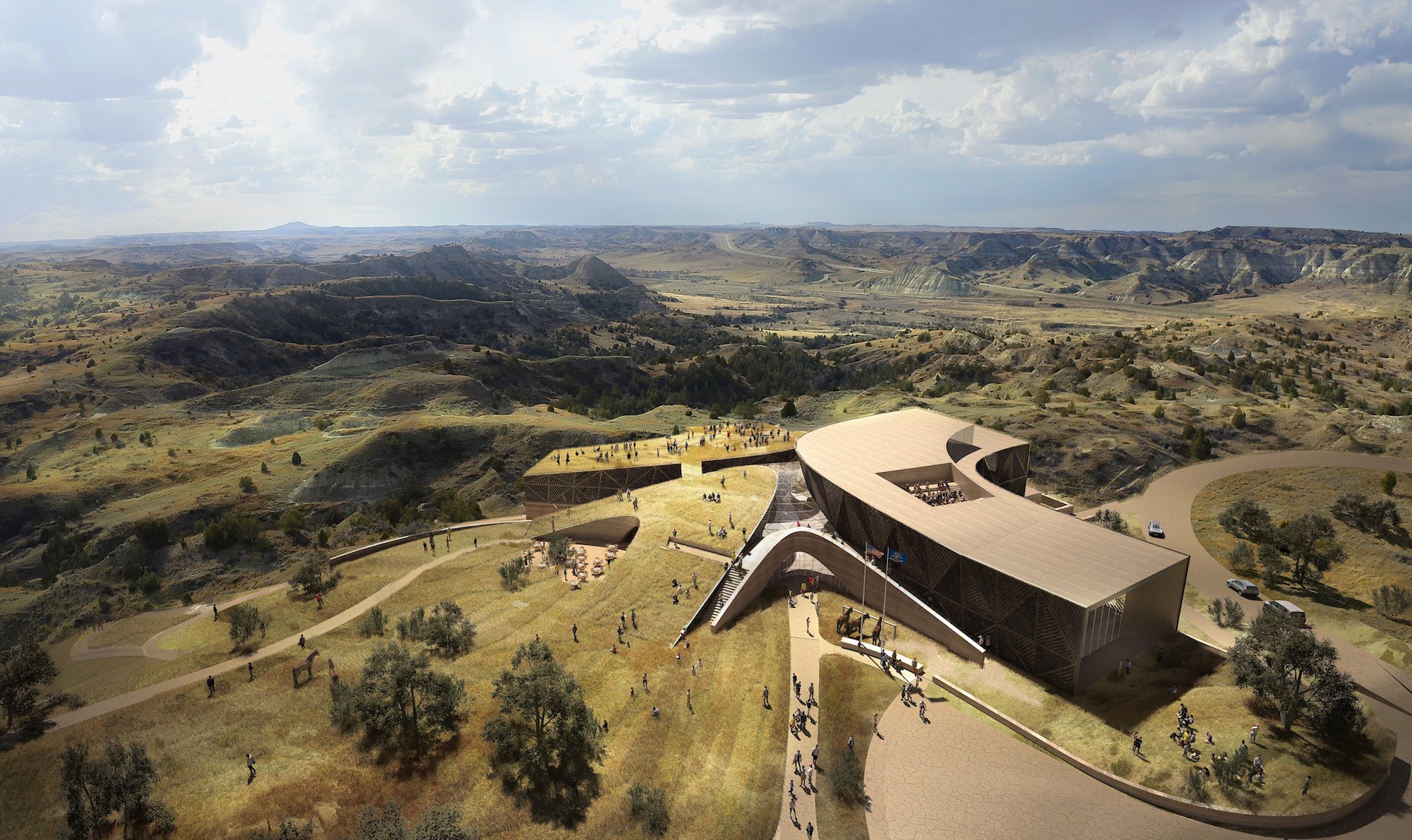
Like the other two proposals, Studio Gang’s design, Basecamp, is deeply embedded, quite literally, into the landscape like a rock formation that’s been “carved away by water and wind.” As the Chicago-based firm describes it, the library—geared to be carbon-neutral and net-zero—is “a transformative gathering place where immersion in T.R.’s story and the surrounding environment brings people together to find common ground and inspires and equips them to launch back into the world with renewed passion and purpose.” Philadelphia-based landscape architecture studio OLIN collaborated with Studio Gang on the design, which will also entail a comprehensive ecological restoration and management plan “that will heal and renew the surrounding ecosystems over time.”
The library itself is composed of three overlapping horseshoe-shaped volumes—a nod to Roosevelt’s rough-and-tumble buckaroo days—that house different programmatic functions “while simultaneously embracing the dramatic outdoor environment, creating protected gardens and terraces that offer varied views of the landscape, showcase native plant communities, and provide habitat for wildlife.”
“As the first Presidential Library attached to a National Park, the project is poised to foster greater understanding, environmental stewardship, and healing in one of North America’s most incredible natural places,” said Studio Gang’s founding principal, Jeanne Gang, in a statement. “Intimately connected with the ecology of the North Dakota Badlands, Basecamp will at once draw people inward for intellectual exchange and direct them outward for physical exploration, allowing them to discover new connections with each other and the natural world.”
The final design chosen by TRPLF will be announced in September. Construction is expected to kick off next year, and the Theodore Roosevelt Presidential Library will open to the public in 2024 or 2025 if all goes to plan.







